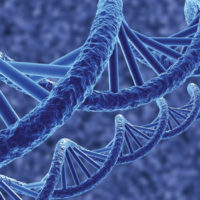FDA Studies Effectiveness of Whole-Genome Sequencing Program

Photo credit: Gio_tto/iStock/Getty Images Plus via Getty Images
The U.S. Food and Drug Administration (FDA) has published a study on the impact of the GenomeTrackr Whole-Genome Sequencing (WGS) Network. FDA uses this tool to detect, investigate, and limit the spread of foodborne outbreaks linked to FDA-regulated foods. Now in its second year of implementation, FDA estimates that the program was likely cost-effective. The program generates $100 million to $450 million in net annual health benefits at its current funding levels.
The results of the study imply that for each additional 1,000 WGS isolate sequences added to the database for any given pathogen, there is a decrease of approximately six illnesses per year associated with that pathogen. As the WGS database grows, the program helped decrease foodborne illness in the U.S. a year after its launch, and the effect of the program on human health shows improvements over time.
The study also shows the impact of WGS implementation on possible food contamination and related illnesses. Data from outbreaks from 1999 through 2019 that were investigated by FDA were used for the analysis. Scientists looked at the effects of WGS program isolates collected in the U.S. on outbreak illnesses, compared the results with existing literature, and conducted an analysis to estimate the benefits and costs.
FDA's GenomeTrakr network was launched in 2012, and has grown to include federal, state, hospital, and other labs in the U.S., as well as other nations that use WGS for pathogen identification. FDA continues to facilitate opportunities to speed the adoption of WGS by public and private laboratories. The New Era of Smarter Food Safety Blueprint aims to advance its goals by using WGS and GenomeTrakr, which include facilitating opportunities to advance the sequencing of pathogens.
Looking for a reprint of this article?
From high-res PDFs to custom plaques, order your copy today!









